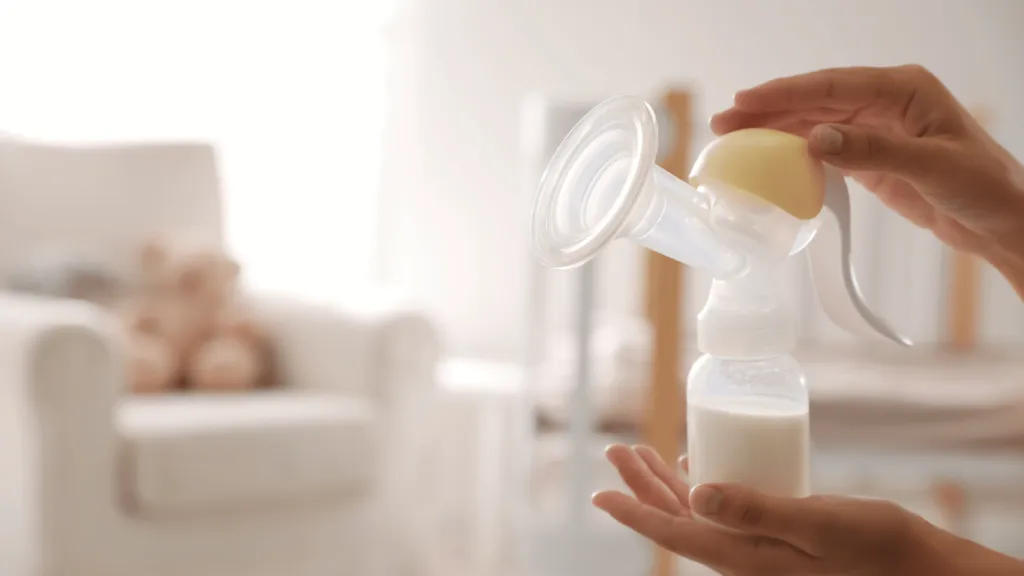Embarking on the breastfeeding journey is a beautiful experience, but sometimes life throws curveballs, making breast pumps your new best friend. Navigating the sea of options can feel overwhelming, but fear not, mama! This guide dives into the various breast pump types, equipping you to discover your perfect match based on your unique needs and lifestyle.
Learn what is a breast pump and some basic concepts here.
Pumping Powerhouses: Manual vs. Electric
When it comes to choosing a breast pump, the FDA categorizes them into three main options: manual pumps, perfect for occasional use with their portability and affordability; battery-operated pumps, offering on-the-go convenience but with potentially less power than electric models; and electric pumps, providing the most power and customization. These further branch into wearable pumps, discreet and hands-free for multitasking moms, and portable electric pumps, offering more power and capacity than their wearable counterparts. Here is the detail;
Manual Pumps
Manual pumps operate solely on your hand or arm strength to create suction and express milk. They’re budget-friendly, compact, and portable, ideal for occasional pumping, travel, or stash-building. The downside? Manual pumping can be tiring and requires more effort than electric or wearable options.
- Pros: Budget-friendly, compact, portable, perfect for occasional use or on-the-go moms.
- Cons: It requires manual effort and can be tiring for frequent pumping.
- Types: Single or double piston, bulb pumps.
- Best for: Occasional pumping, travel, building a milk stash.
- Popular Reviews: Medela Harmony, Philips Avent Manual Breast Pump.
Electric Pumps
Electric pumps offer convenience and efficiency, employing a motor to create suction for milk expression. Choose between single pumps (one breast at a time) or double pumps (both breasts simultaneously). Electric pumps are ideal for frequent pumping, boosting supply, multitasking, or working moms. While generally more expensive and bulkier than manual pumps, they offer adjustable suction levels, hands-free operation, and a quicker pumping experience.
- Pros: Convenience, efficiency, adjustable suction, single or double pumping options.
- Cons: Higher cost, bulkier size, and the requirement for a power source.
- Types: Single or double electric, hospital-grade.
- Single vs. Double: Single pumps one breast at a time, ideal for occasional use or pumping while nursing. Double pumps both breasts simultaneously, saving time, perfect for frequent pumping or boosting supply.
- Hospital-grade vs. Personal-use: Hospital-grade pumps are robust and durable, suitable for frequent pumping or multiple babies. Personal-use pumps are smaller, quieter, and ideal for occasional to moderate use.
- Features to Consider: Suction levels, portability, noise level, battery life, closed system for hygiene, massage function, and price.
- Popular Reviews: Spectra S1 Plus, Medela Pump in Style with MaxFlow, Lansinoh Smart Pump 2.0.
Wearable Breast Pumps
Wearable pumps, like in-bra or clip-on models, provide discreet, hands-free pumping on the go. They offer portability and convenience, perfect for multitasking moms or discreet pumping at work. However, their capacity may be limited compared to traditional pumps and might be less powerful for some users.
- Pros: Discreet, hands-free operation, ideal for multitasking or busy schedules.
- Cons: Limited capacity, may need more power than traditional pumps.
- Types: In-bra pumps, clip-on pumps.
- Best for: Discreet pumping on the go, multitasking moms, occasional pumping.
- Popular Reviews: Elvie Pump, Willow 3.0, Momcozy M5 and Zomee Fit
Hospital-Grade Pumps
Hospital-grade pumps are robust, durable pumps designed for frequent pumping or pumping for multiple babies. They boast powerful suction and longer operating times, making them suitable for heavy-duty use. However, they are typically the most expensive option, requiring rental or purchase through healthcare providers.
- Pros: Strong suction power, efficient, ideal for hospital settings
- Cons: Bulky and expensive
- Types: Hospital and clinic pumps
- Best for: Those with premature babies or twins who need more milk expression
- Popular Reviews: Medela Symphony
Finding Your Perfect Match
Remember, the best pump aligns with your specific needs! Consider:
- Frequency of use: Occasional? Opt for a manual or single electric pump. Frequent pumping? Double electric or hospital-grade might be your best fit.
- Budget: Pumps range in price. Set a realistic budget and compare features before making a decision.
- Portability: Need to pump on the go? Choose a lightweight, compact pump that is like a wearable or travel-friendly electric option.
- Desired features: Adjustable suction levels, noise level, battery life, and closed systems for hygiene are crucial factors.
Seek Expert Guidance
Lactation consultants are your breastfeeding gurus. Don’t hesitate to reach out for personalized recommendations and expert insights.
Bottom Line—Breast Pump Types
Choosing the right pump is like finding your perfect pair of shoes – it needs to fit perfectly! By understanding the options and considering your unique needs, you can create a comfortable, efficient, and empowering experience that supports your breastfeeding journey and strengthens the beautiful bond you share with your little one.

